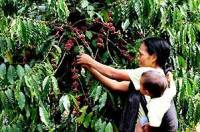March 30, 2007
JENNIFER McMULLEN
SILHOUETTE STAFF
McMaster’s University Student Newspaper
Hamilton, ON Canada
Squeeze and roll. Seems simple enough, doesn’t it? For Paul Kind, this isn’t exactly true. He is the inventor of the rim roller, a device specifically used for rolling up the rim on coffee cups.
“Paul is a problem solver,” said his wife Iona. “We would go to [Tim Horton’s] every Tuesday and struggle to roll up our rims. The first thing in his mind was that there has to be a better way. He was trying to make a living and in his spare time he would put his mind to that, physically making 12 different prototypes. It went on and on for 3 years; it’s been a long process to make it the right size and shape. I’m really hoping this works well for him because he’s worked hard for so many years.”
To some, the idea of having a device to roll up the rim for you seemed a little bit ridiculous. When asked if he would be buying a rim roller, third-year theatre and film studies student Tyler Shearer replied, “Absolutely not. Why do I have to pay for a product when I can just use my thumbs?”
Other students, such as fourth-year sociology student Jenn Mosselman and third-year English student Heather Cairnie, said that they might purchase one as a stocking stuffer or a gag gift. Mosselman added that it was “hilariously intelligent that they’re making money off of a contest that people love. But it just goes to show you that our society isn’t about need, it’s about want.”
Alexa Di Cresce, a third-year theatre and film studies major, remarked, “Inventions are about novelty rather than making things better. Why not make something that matters?”
In defence of the product, Iona Kind said, “To each their own. We can’t twist anyone’s arm to buy it. Elderly people love it because it’s tough for some people if they have arthritis or other things that limit their abilities. [I’ve] received an inspiring e-mail from a lady that had taken the gadget to work and given it to a man that had one arm. Remarkably he’s able to do it himself now. Then you’ve got the people that bite the tabs and rip them off. This is way more sanitary. It’s all a matter of perspective.”
Essentially, the choice to buy into it all is up to the consumer. Some students don’t even bother purchasing Tim Horton’s coffee because they don’t practice fair trade—they use what the company refers to as a “coffee sustainability program.” According to the Tim Horton’s website “under the coffee sustainability program, small coffee producers are being provided with technical support and training to help them increase the amount and quality of coffee they produce. Our own coffee experts also travel to the growing farms to ensure that proper conditions exist for both the coffee and the workers. While we certainly agree in principle with the aims and goals of Fair Trade coffee, our dilemma is that the growers who belong to the Fair Trade ‘Certified Co-ops’ cannot supply either the volume or the quality of beans that our chain requires for our special blend. The fair trade program requires certification on behalf of the farmers, which is an expense they cannot usually afford. Plus it provides a price that has no relation to the quality of the coffee. ”
When asked to comment further on the program’s accountability and monitoring system, a Tim Horton’s representative said, “The information available on the website was all that we can share at this time.”
In defense of Fair Trade Coffee, Chantal Havard from TransFair Canada, a non-profit organization dedicated to fair trade practices, said, “Specific to fair trade is a guaranteed minimum price, social premiums and long-term relations, direct contact and environmental and worker standards. There is a mechanism of monitoring involved.”
“No one knows how these other programs work. It is true that producers pay certification fees, but to make sure producers aren’t disadvantaged, Fair Trade Labelling Organizations has created a fund so that farmers can get first year certification fees waived. And it isn’t a loan, it’s a grant,” added Havard.
To further clear up the issue of Fair Trade versus Coffee Sustainability programs, Sandy McAlpine, president of the Coffee Association of Canada explained the difference between the two. With the coffee sustainability program, he said, there are “direct linkages made rather than through a certification system. They go to source countries and set up direct support relationships in order to get control over working with their suppliers. So the trade-off is more controlled; there is no third party involved.”
When asked where he thinks students should be buying their coffee from in order to be socially conscious, McAlpine replied, “With where the market is [right now], you accomplish the same thing when buying from either. One is doing about as much good as the other.”
To some, the idea of having a device to roll up the rim for you seemed a little bit ridiculous. When asked if he would be buying a rim roller, third-year theatre and film studies student Tyler Shearer replied, “Absolutely not. Why do I have to pay for a product when I can just use my thumbs?”













